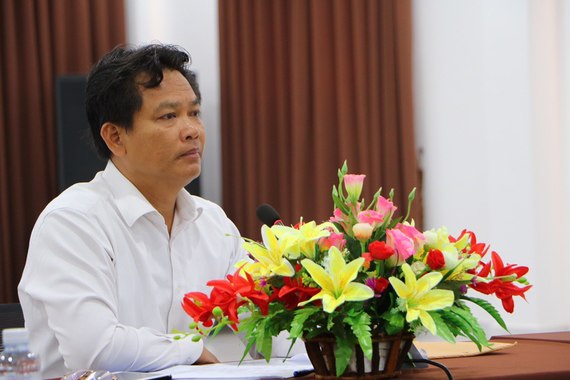The Preah Vihear temple, a UNESCO World Heritage Site, stands as a testament to the architectural brilliance and historical legacy of the Khmer Empire. In recent discussions, a compelling proposal has surfaced – the permanent closure of the temple's entrance from Thailand. This proposition is viewed by advocates as a crucial step toward ensuring the sustained preservation of this cultural marvel. However, this measure is not without complexities, as it carries implications for diplomatic relations, local economies, and global efforts to protect cultural heritage.
The temple, situated atop a cliff along the Cambodia-Thailand border, has faced numerous challenges throughout its existence. Historical territorial disputes and damages incurred during armed conflicts have highlighted the vulnerability of this sacred site. The call for closing the entrance from Thailand is seen as a proactive measure to shield the temple from potential risks and secure its longevity for future generations.
Proponents of the closure argue that prioritizing the temple's preservation aligns with broader global efforts to protect cultural heritage. They emphasize the collective responsibility of nations to collaborate in safeguarding these shared legacies. The closure is seen as a necessary step to mitigate the impact of political tensions and potential damages that could arise from external factors.
However, the proposal carries significant diplomatic implications, as it involves an international border. Closing an entrance from one country may strain relations between Cambodia and Thailand. Striking a balance between preserving cultural heritage and maintaining positive international ties becomes a delicate task. The global implications of how nations collaborate in safeguarding shared treasures are at the forefront of this debate.
Opponents of the closure raise concerns about potential economic and diplomatic repercussions. They argue that the temple's accessibility from both countries contributes to tourism, which in turn supports local economies. Closing the entrance may lead to a decline in tourism, affecting businesses and livelihoods in the surrounding areas. Balancing the economic impact with the imperative of heritage preservation becomes a crucial aspect of this proposal.
In the midst of these considerations, a balanced approach is necessary. Engaging in open dialogue and diplomatic negotiations becomes imperative for both Cambodia and Thailand. Seeking solutions that mutually prioritize the conservation of Preah Vihear while minimizing adverse effects on diplomatic ties and local economies is crucial. The challenge lies in finding a middle ground that respects the temple's historical significance and ensures its preservation while fostering cooperation between nations.
The fate of Preah Vihear temple is not only a matter of regional concern but also a global one. The interconnectedness of cultural heritage and the shared responsibility of nations in its preservation underscore the importance of international collaboration. Efforts to protect such sites should transcend geopolitical boundaries, promoting a sense of collective stewardship for the benefit of humanity.
As the discussions unfold, it is essential to consider the impact on local communities. A careful examination of potential economic and social repercussions should guide decision-making. Implementing measures to mitigate any adverse effects on local livelihoods, such as alternative tourism strategies or community development programs, can be integral to finding a sustainable solution.
Tourism plays a significant role in the economic ecosystem surrounding Preah Vihear temple. Opponents of the closure argue that restricting access may deter visitors, leading to a decline in revenue for local businesses. Proponents, however, contend that sustainable tourism practices, coupled with careful planning, can minimize the economic impact while preserving the temple's sanctity. Striking a balance between tourism and conservation efforts is crucial for the long-term viability of both.
The preservation of cultural heritage is a global endeavor that transcends national interests. Nations worldwide are recognizing the importance of protecting and conserving historical sites for future generations. The closure proposal for Preah Vihear temple reflects this broader trend, highlighting the need for a harmonious balance between safeguarding the past and fostering international collaboration.
As a UNESCO World Heritage Site, Preah Vihear temple comes under the umbrella of international cooperation for heritage protection. The role of UNESCO in mediating discussions and providing guidance on best practices becomes crucial. Collaborative efforts facilitated by UNESCO can ensure that decisions made regarding the temple's future align with global standards for heritage preservation.
Examining the experiences of other heritage sites facing similar challenges can provide valuable insights. Case studies of successful collaborations and innovative solutions to balance preservation and accessibility can inform decision-making for Preah Vihear temple. Learning from both the successes and failures of past endeavors contributes to a more informed and nuanced approach.
In navigating the diplomatic intricacies, cultural diplomacy emerges as a potent tool. Fostering understanding and appreciation of each nation's cultural heritage can create a common ground for collaboration. Cultural exchange programs, joint conservation projects, and educational initiatives can strengthen ties between Cambodia and Thailand, fostering a shared commitment to preserving Preah Vihear temple.
In the digital age, technology offers innovative solutions for monitoring and protecting heritage sites. Implementing state-of-the-art surveillance systems, real-time monitoring, and advanced preservation techniques can enhance the security of Preah Vihear temple. Collaborative efforts in technology-driven heritage protection can serve as a model for safeguarding cultural treasures globally.
As the world watches the unfolding discussions surrounding the closure of the Thai entrance to Preah Vihear temple, the complexities of preserving cultural heritage on the global stage become evident. Striking a harmonious balance between protecting the past and nurturing international relations will undoubtedly shape the legacy of this iconic site. The fate of Preah Vihear temple serves as a testament to the challenges and responsibilities associated with safeguarding our shared cultural heritage in an interconnected world.
----
Vichana Sar, a researcher based at the Royal Academy of Cambodia. He holds MPM from KDI School of Public Policy and Management [Public Administration and Global Governance & Political Economy] and MEd from Royal University of Phnom Penh [Managing and Planning].
RAC Media






